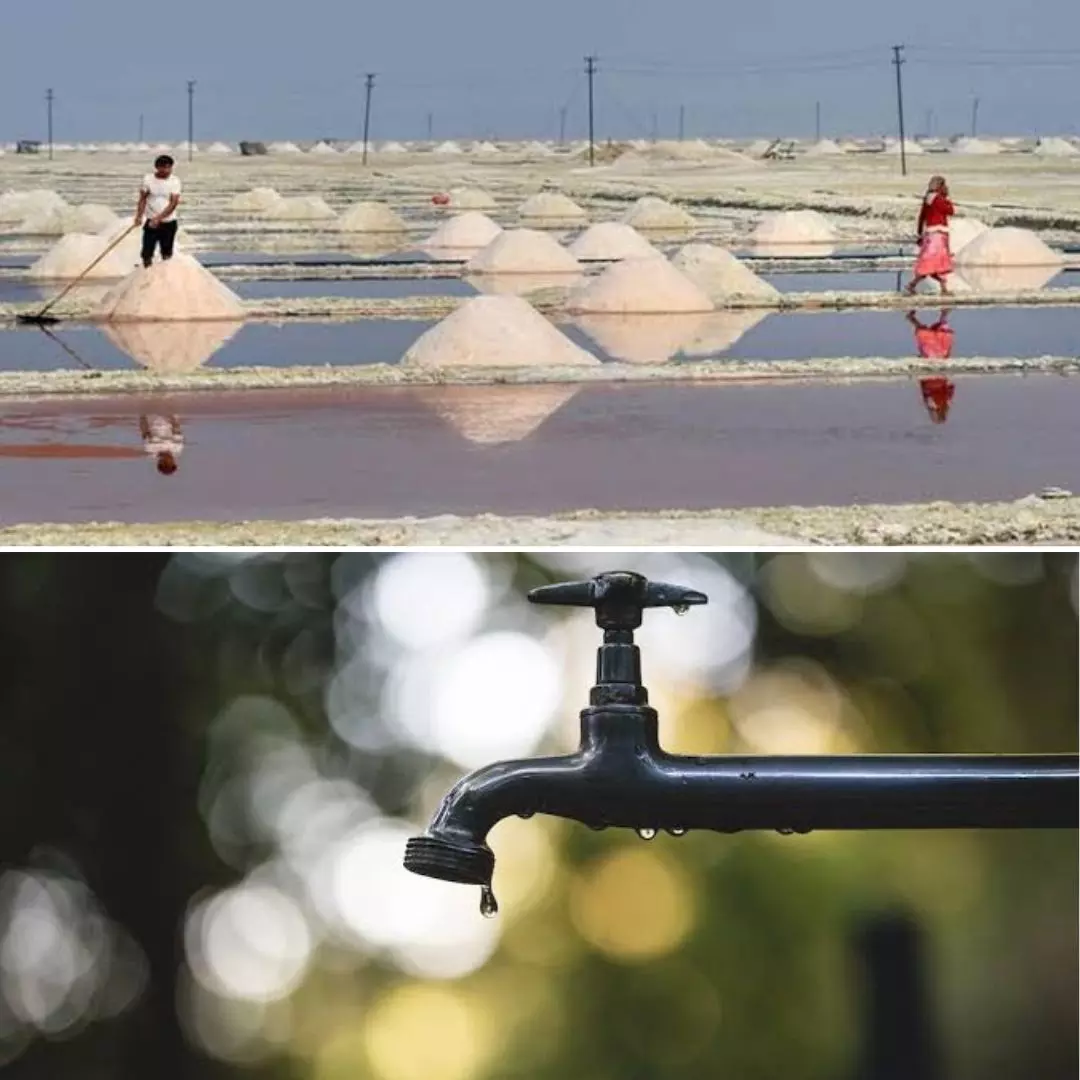
Image Credits: TripAdvisor, Unsplash
Deadly Waters! India's Largest Inland Salt Lake Is Causing Deformities & Disorders Among Villagers; Know More
Writer: Laxmi Mohan Kumar
She is an aspiring journalist in the process of learning and unlearning many things. Always up for discussions on everything from popular culture to politics.
Rajasthan, 16 Jan 2023 9:53 AM GMT
Editor : Shiva Chaudhary |
A post-graduate in Journalism and Mass Communication with relevant skills, specialising in content editing & writing. I believe in the precise dissemination of information based on facts to the public.
Creatives : Laxmi Mohan Kumar
She is an aspiring journalist in the process of learning and unlearning many things. Always up for discussions on everything from popular culture to politics.
According to an NGO, the number of people with disabilities (PwD) in the villages near Sambhar lake is double the national average of PwD. Their deformities have been attributed to the consumption of highly saline groundwater.
Water, a basic necessity for humans, is the cause of many deformations and disorders in a few villages in Rajasthan. The villages near India's largest inland salt lake - Sambhar lake- found their groundwater to be highly saline with fluoride content due to the lake. As the villagers do not have many other sources for their water needs, they rely on the groundwater and have seen the water impact their toddlers and elderly equally. Today, many among them live with disabilities and deformities that have been directly linked to the high fluoride content in the area.
Two cousins, aged 18 and six, struggle to lead a normal life due to their deformed limbs and stunted growth. In their house, the deformities have become a familiar story as every member, from the young to old ones, has faced frequent joint pains courtesy of the water they consume. Despite knowing that the water is the root cause, there's not much the family can do as there is no other source of water for them to rely on.
Drinking Their Way To Disorders
This is the story of many households located in Devpura and Moondwara in the state's Sambhar block, about 80 km from the Sambhar salt lake. For years the villagers have conveyed their doubts regarding the lake water that has contaminated the groundwater with high salinity and fluoride content. As groundwater is their main water source, it directly impacts the villagers.
Om Prakash Sharma, head of the non-governmental organisation (NGO) Gram Chetna Kendra, stated that disability in the two villages averages about ten in every thousand. These numbers provided by the NGO equate to the seriousness of the concern, as the national average itself is about five in every thousand people. In short, the disability in the village is almost double the national average.
According to a report by the Central Ground Water Board (CGWB), most of these disabilities are linked to the high fluoride content in groundwater, with the concentration going up to 16.4 mg/litre in some places at the Sambhar block against the permissible 1mg/l. This brings in serious long-term effects, such as skeletal fluorosis. While controlling the fluoride content in the water can reverse non-skeletal symptoms, the skeletal symptoms are irreversible and can severely impact a person's daily activities.
A report by the New Indian Express quoted Dr Aman Dua, an orthopaedics expert, saying that the non-skeletal symptoms start quite early with noticeable nausea and abdominal pain. It then worsens with skeletal manifestation, which is when many people understand that fluorosis is affecting the system. This also impacts mental health and can lead to nervousness and depression. On the physical level, muscle strength will be affected, along with the tendons, kidneys, and other organs.
Elaborating it from the medical perspective, rheumatology specialist Dr Amit Sharma stated that prolonged fluoride ingestion gets the chemical deposited in our gums, enamel and bones. This high amount of fluoride then replaces the calcium hydroxyapatite formed in the bones, making the teeth ultra-white and bones brittle. It then starts to affect the entire functioning of the system with joint stiffness, ligament calcification, and deformities, among others.
Signs Are Visible, But Measures Are Not
Every household in the village has a similar story to narrate. The people saw their limbs slowly start deforming, speech gets slurred, and gradually the disability affects the entire body. The water they consume, which is considered to be the culprit, looks clear at first but soon as it gets collected in a container, the salt can be seen settling in the bottom. The deformities and the cause are clear, but the measures remain unknown to these villagers.
Shanti Devi, a resident of the village, stated that the government had started a pipeline to connect them to a different source but left the project unfinished. Due to this, the villagers continue to depend on groundwater, and nothing has changed for them ever since. Speaking about the villagers' woes, Sakshi Singh, principal of the primary school in Devpura, says that out of the 30 children in their school, five to six children suffer from disabilities. Despite the number of people being affected, the humble village still has minimal facilities that can accommodate the needs of the disabled.
Many children and adults who now suffer from full-body disabilities couldn't recognise the symptoms initially. Ramesh Singh, a farmer and father of a specially-abled individual, said, "We don't understand what went wrong. The deformities slowly started and spread across the body, we showed doctors in cities, and they blamed saline water for it." Over a span of two decades, the situation has worsened, and organisations have been working to take the issue to officials.
According to official data, the existing tap connection in the rural Jaipur district is merely 39 per cent. Despite the government launching Jal Jeevan Mission that promised to provide clean tap water connection to the entire rural India, the villagers near Sambar lake say such schemes are yet to reach them.
Also Read: One Minute For Healthy Heart! Study Finds Ways To Counteract Harmful Effects Of Sitting All Day
 All section
All section














